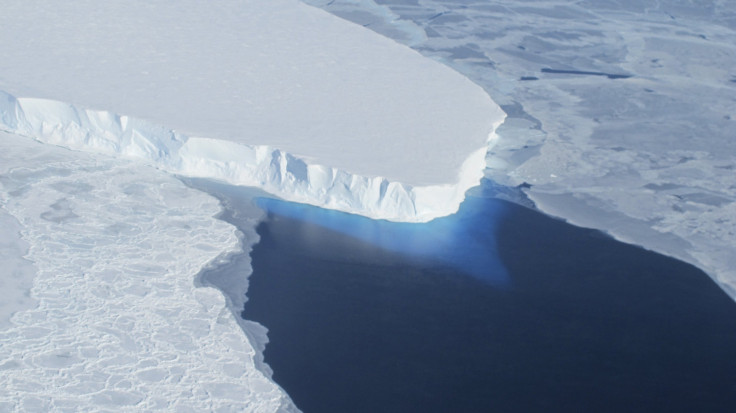Climate Change: Antarctic Ice Reveals 68,000 Years Of History, Hints At Oceans’ Role In Temperature Change

Ice cores pulled from miles below Antarctica’s surface are revealing new evidence of ancient links between the climates of Earth’s Northern and Southern hemispheres. A cylinder of ice drilled from a depth of more than 11,100 feet has allowed scientists to document 68,000 years of climate history, including a consistent, 200-year lag between climate events in the North Atlantic and those in Antarctica, says a study published Thursday in the journal Nature. Understanding how heat and cold moved between the two poles is key to understanding future climate change, researchers said.
Comparing the recently derived Antarctic core samples to ice cylinders drilled from Greenland in the 1990s, researchers found 18 instances in the past 68,000 years in which Earth’s climate suddenly shifted. In almost every instance, the change took place in Greenland first, and took two centuries to show up in Antarctica. Researchers determined the past temperatures at the time of each of those events by measuring water isotopes and sea salt concentrations in the ice cores.
Scientists said they aren’t sure exactly why the past shifts occurred, but that understanding their timing could provide clues about the climate's future.
A leading theory is that the oceans play a major role in transporting climate change from one hemisphere to the other. "The 200-year lag that we observe certainly hints at an oceanic mechanism," Christo Buizert, a postdoctoral research at Oregon State University and lead author on the study, said in a statement. "If the climatic changes were propagated by the atmosphere, the Antarctic response would have occurred in a matter of years or decades, not two centuries. The ocean is large and sluggish, thus the 200-year time lag is a pretty clear fingerprint of the ocean's involvement."
The research team was composed of scientists from all over the U.S. and was funded by the National Science Foundation.
Scientists said the new research has helped climatologists solve the puzzle of where climate events happened first: in the north or in the south. "Our findings show how ocean currents can transmit climate changes that start in the Arctic across the globe all the way to the Antarctic," Kendrick Taylor of the Desert Research Institute in Nevada and a lead scientist on the Antarctic drilling project, said in a statement. Taylor spent five seasons in Antarctica extracting the core and helped researchers determine its age. "Knowing how ocean currents influenced past climates will help us predict how the current human-caused variations in climate could propagate across our planet," said Taylor.
© Copyright IBTimes 2024. All rights reserved.






















